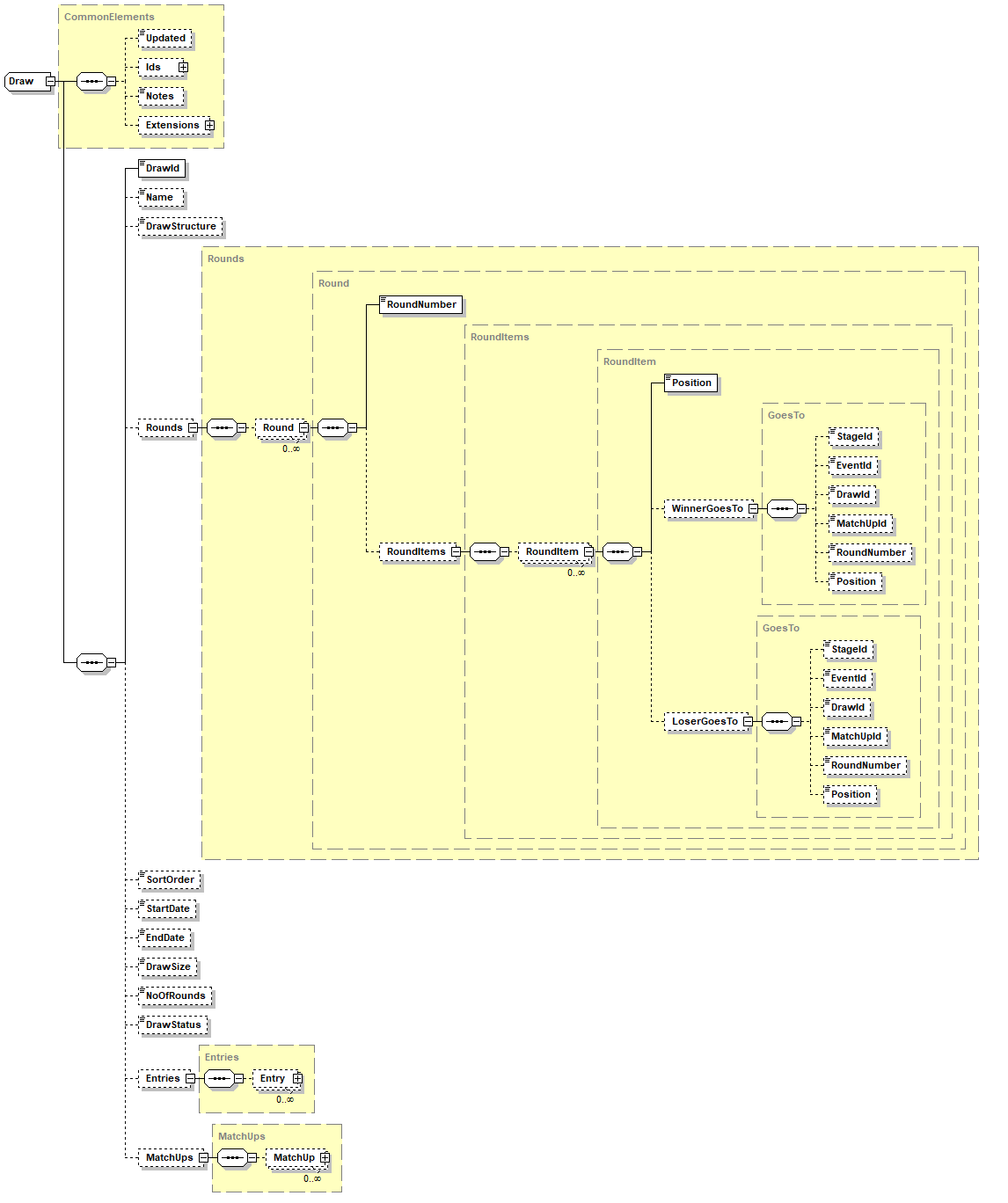Introduction to the Draw
DRAFT DOCUMENTATION
Please note that this documentation is in draft and is not finalised.
We would encourage you provide any comments, questions, or suggestions for changes by use in-line commenting on this page. To do so simply highlight a section of text and then click on the "Comment" option that appears.
1. What is a Draw?
An event is usually made up of a group of matches and when all the matches have been played someone is declared the winner. Different events have different structures for how those matches are arranged to determine the winner. In TODS these structures are called Draws and an event can have any number of draws.
2. Draw Schema
To see a graphical representation of the data model (schema) for the Draw entity please expand the link below:
2. Draw Structure
TODS has three types of Draw Structures. Using these types as building blocks you can create all the different formats used in tennis events.
Round Robin
A group of players (or pairs or teams) all play each other one or more times. At the end of the Draw players can be ranked based on number of matches won or similar criteria.
Knock-Out
Matches are arranged into a series of rounds. Winners of the matches in each round progress to the next round. Losers may be out or may progress to a different draw (for example in Compass). This type of draw is also known as a bracket.
Other
Matches have no specific structure or progression - often used for play-offs.
3. Creating a Draw
The mandatory information required to create a Draw entity is DrawId and DrawStructure. Providing a name is strongly recommended. Where are name is not supplied clients should use the draw type to create a name.
4. DrawID
In DrawID you must supply your unique identifier for the Draw. The value must be unique within the tournament. You can use any value but a unique identifier can easily be created by concatenating the EventId with information about the draw.
5. Matches and Ties
A Draw is usually made up of a number of matches arranged based on the DrawStructure. But in the case of an event between teams (e.g. France vs Sweden) the Draw will contain a set of Ties. Other elements remain the same.
Related Information
- Introduction to the Person
- Introduction to Rankings
- Introduction to the Tournament
- Introduction to Participants
- Introduction to the Event
- Introduction to the Stage
- Introduction to the Draw
- Introduction to the MatchUp
Go back to Tennis Open Data Standards home page.
